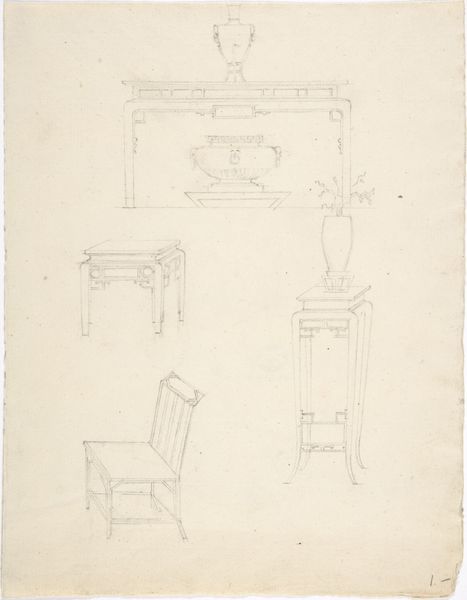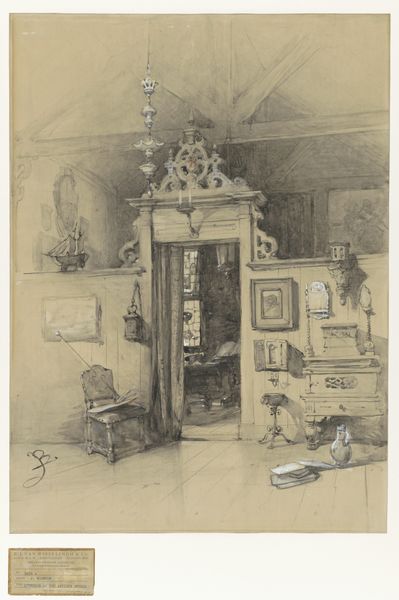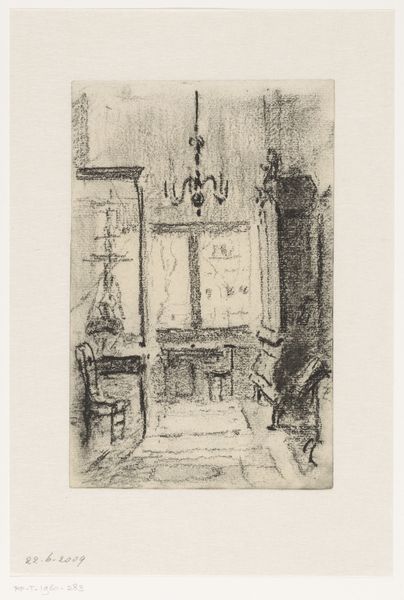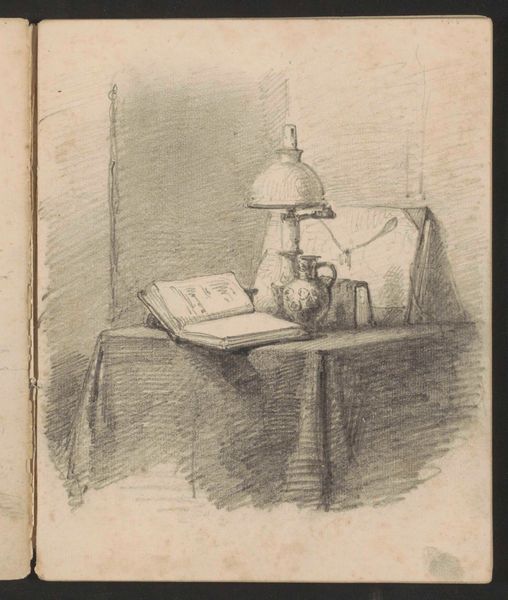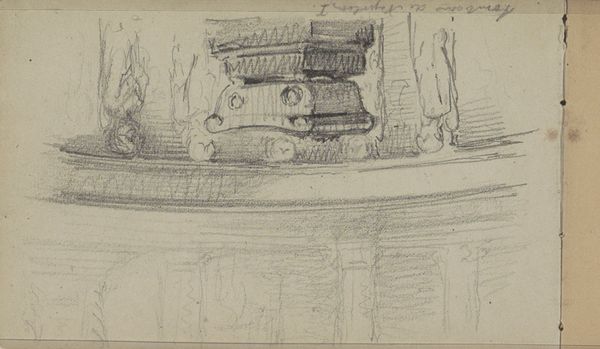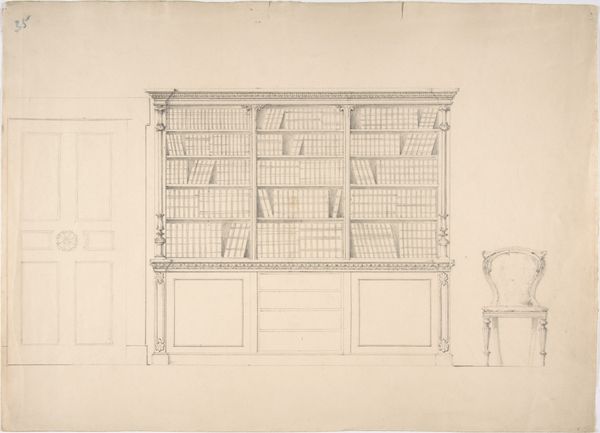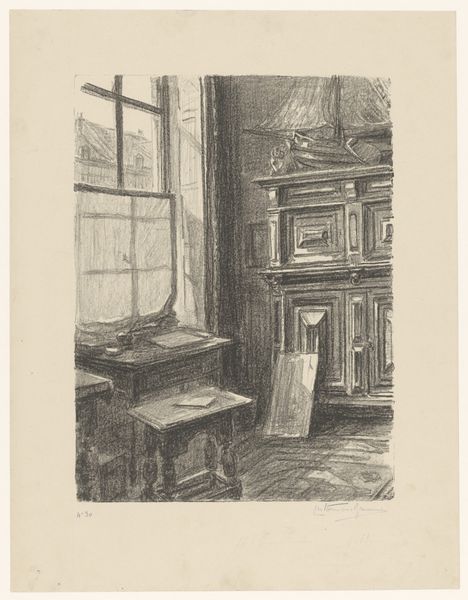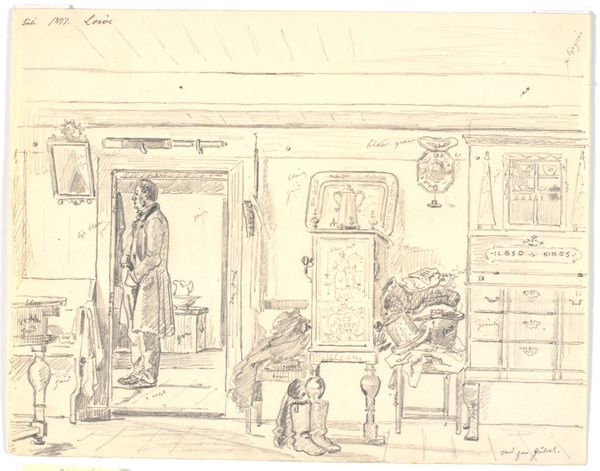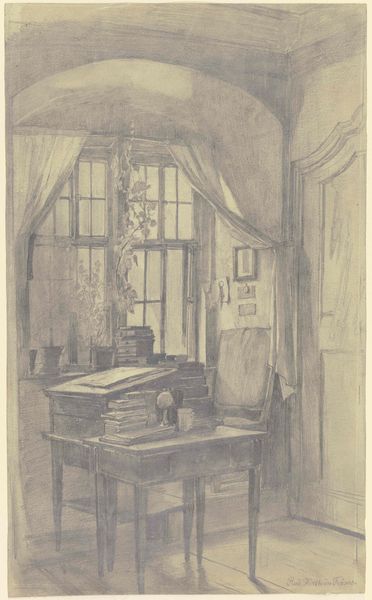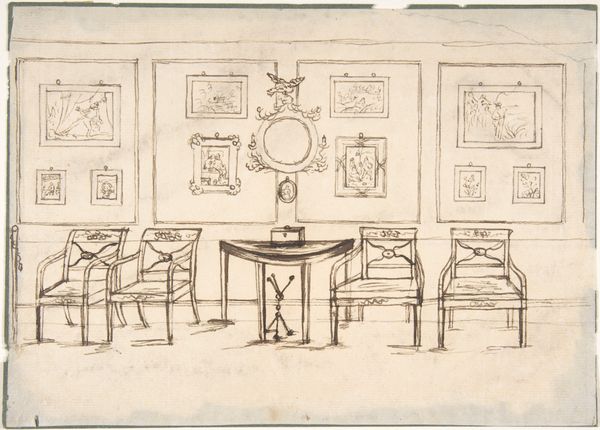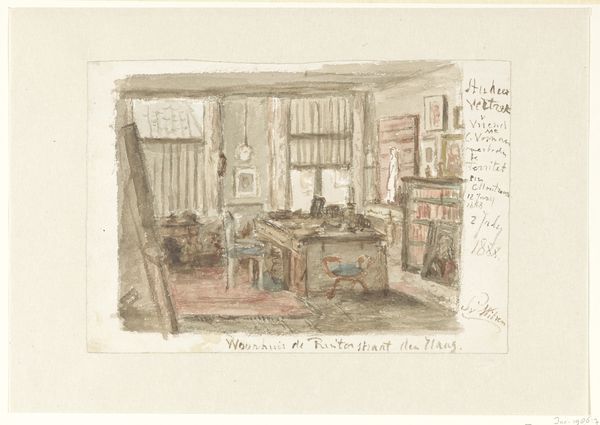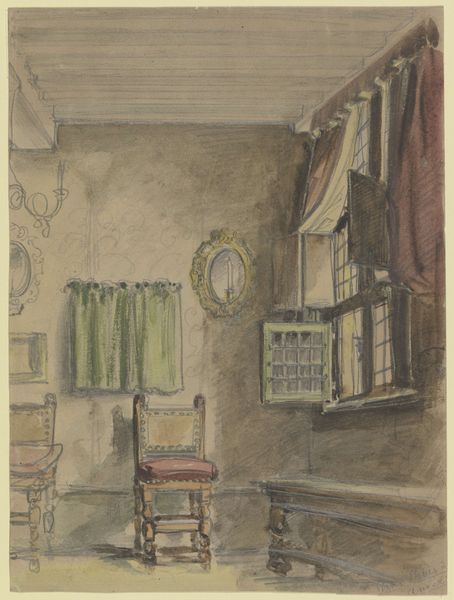
drawing, pencil, architecture
#
drawing
#
etching
#
romanticism
#
pencil
#
architecture drawing
#
architecture
Dimensions: 171 mm (height) x 105 mm (width) (bladmaal)
Editor: This is Martinus Rørbye's "Skrivebord med boghylder," or "Desk with Book Shelves," created in 1847. It’s a pencil and possibly etching drawing. The thing that strikes me first is how incredibly detailed the books look for what appears to be a quick sketch. What can you tell me about it? Curator: I see here a clear focus on the production of knowledge. Consider the desk not just as furniture, but as a site of intellectual labor. Rørbye has meticulously rendered the shelves stacked with books – the raw material for thought and writing. What kind of labour went into producing all of the artifacts presented on the shelves above the desk? And where were these materials sourced from? Editor: That’s interesting. I hadn’t thought about the desk as a workplace, but that makes sense, especially with the emphasis on books as materials. It looks like a rather domestic scene, and not very industrious. What kind of consumption do you imagine? Curator: We might interpret this as a romantic vision of domesticity and the life of the mind, however the abundance of commodities signals other concerns. Someone owns all these objects. Consumption on this level supports particular industries and perpetuates certain class divisions, while access to objects, materials, books, knowledge, is exclusive for the upper classes in the mid-19th century. Think of the labour involved in bookmaking alone. Editor: That completely shifts my perception of the image. Seeing the desk as a symbol of production and privilege gives it a whole new dimension, compared to my first thought of it just being a charming drawing. Curator: Yes, and remember to think about where those materials are coming from, as well as where their material components are going. Consider not just the artist's work, but the labour performed in creating all this art. Editor: Absolutely, thank you! Thinking about the materiality and means of production opens up a whole range of questions I hadn't considered initially.
Comments
No comments
Be the first to comment and join the conversation on the ultimate creative platform.

